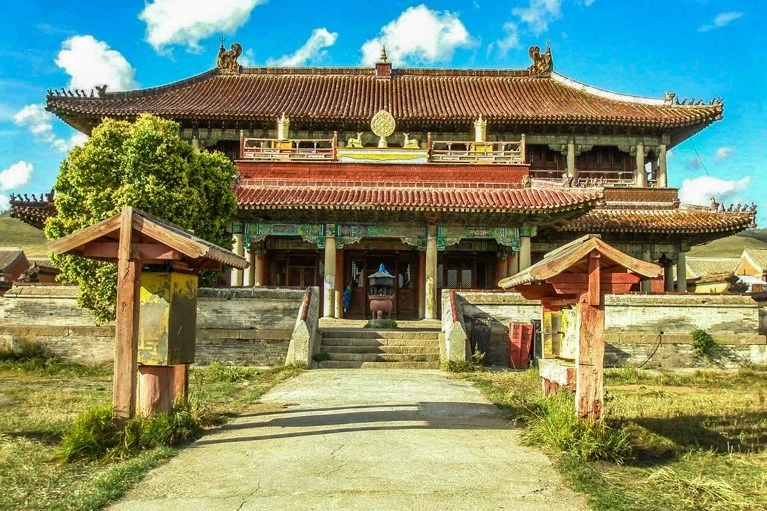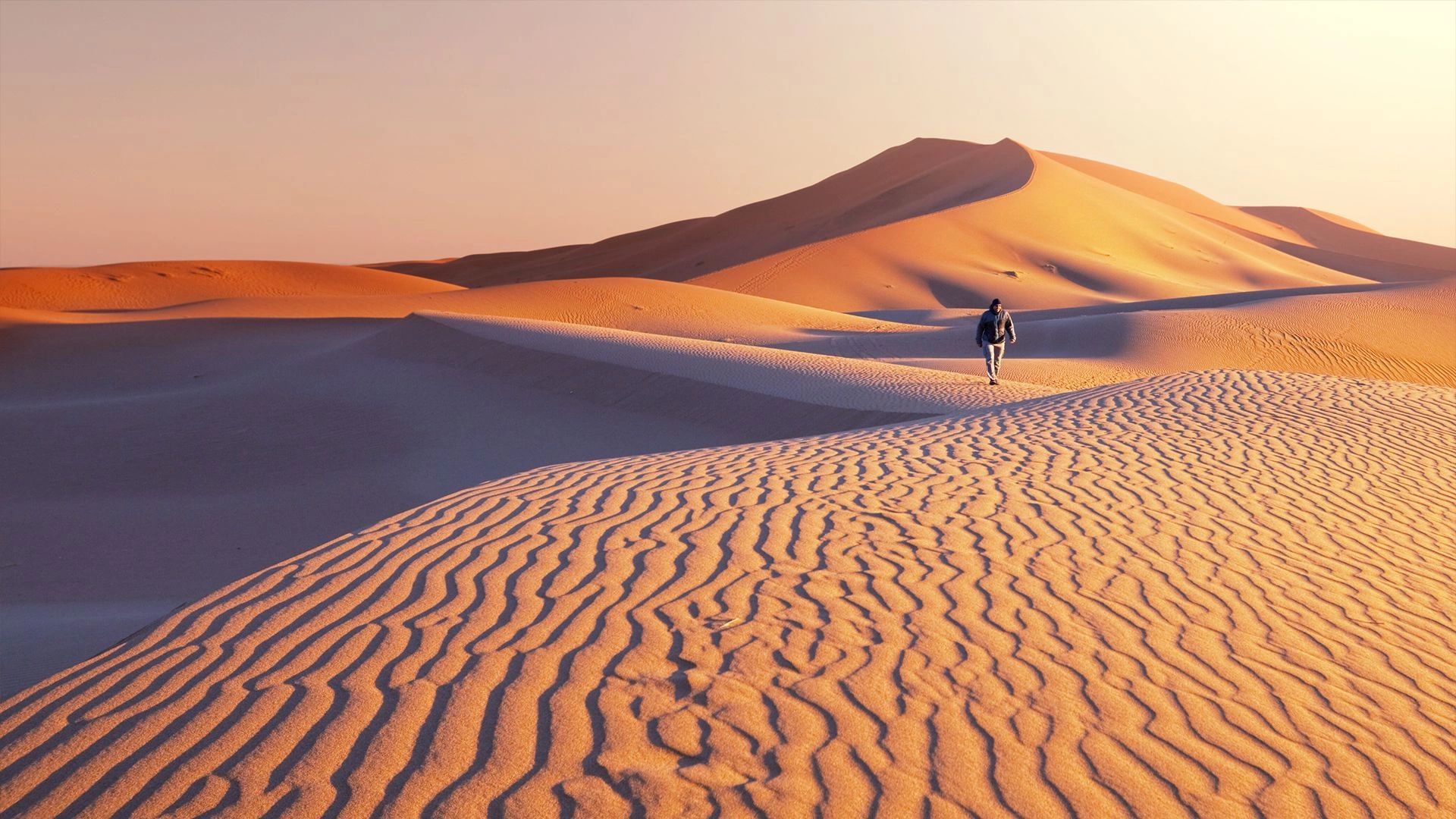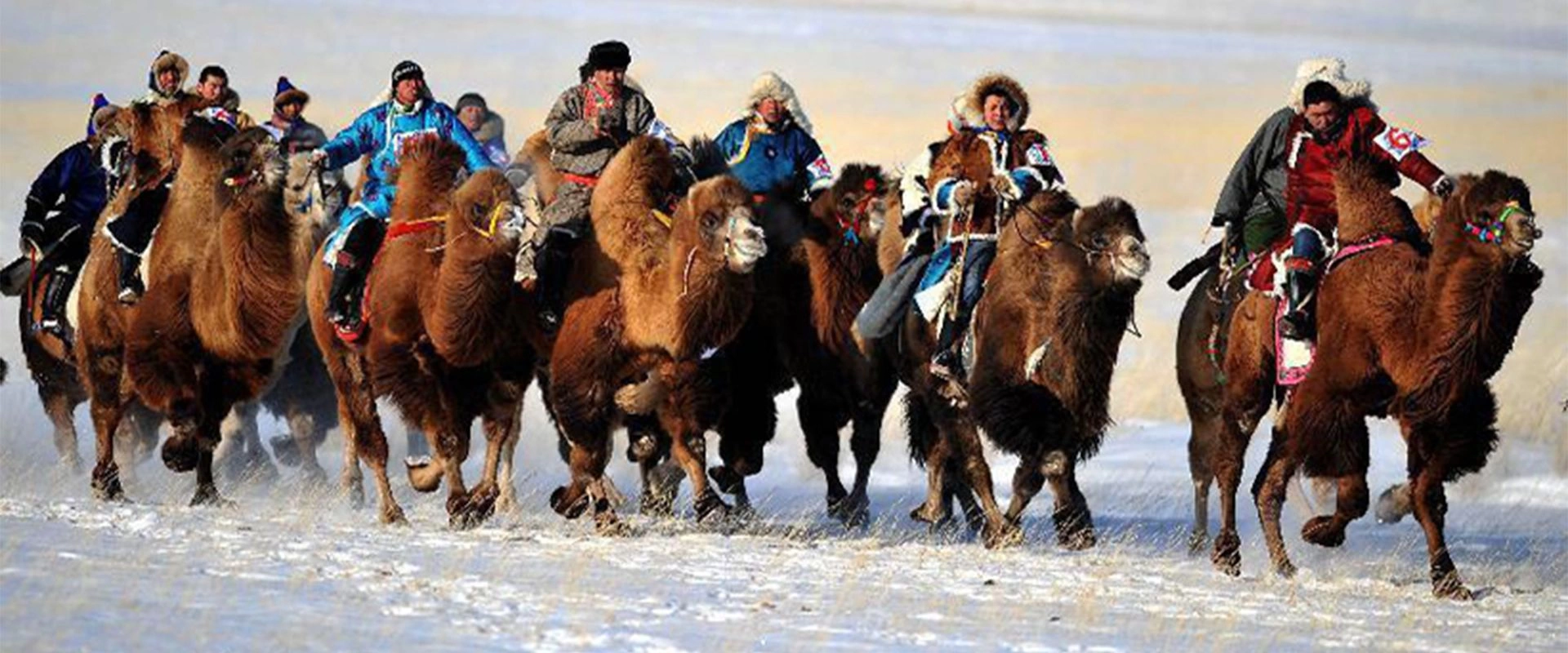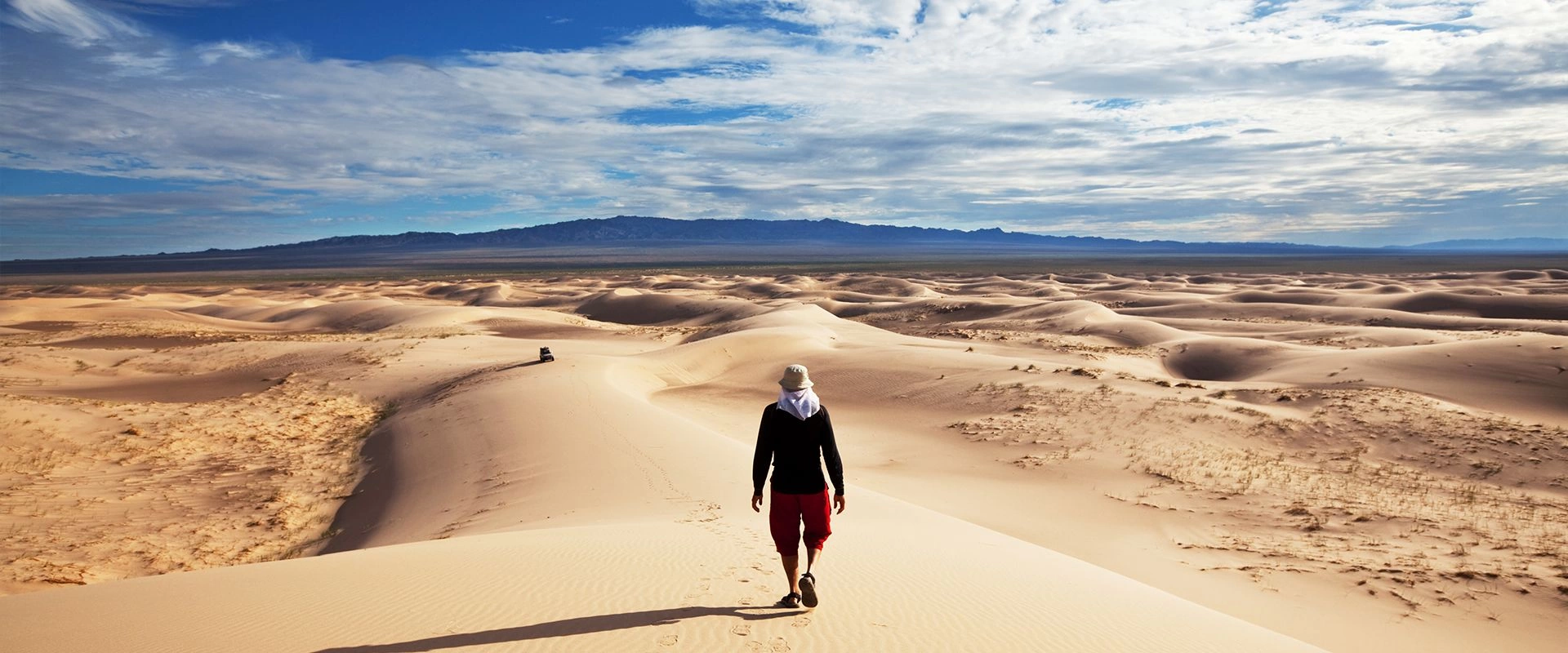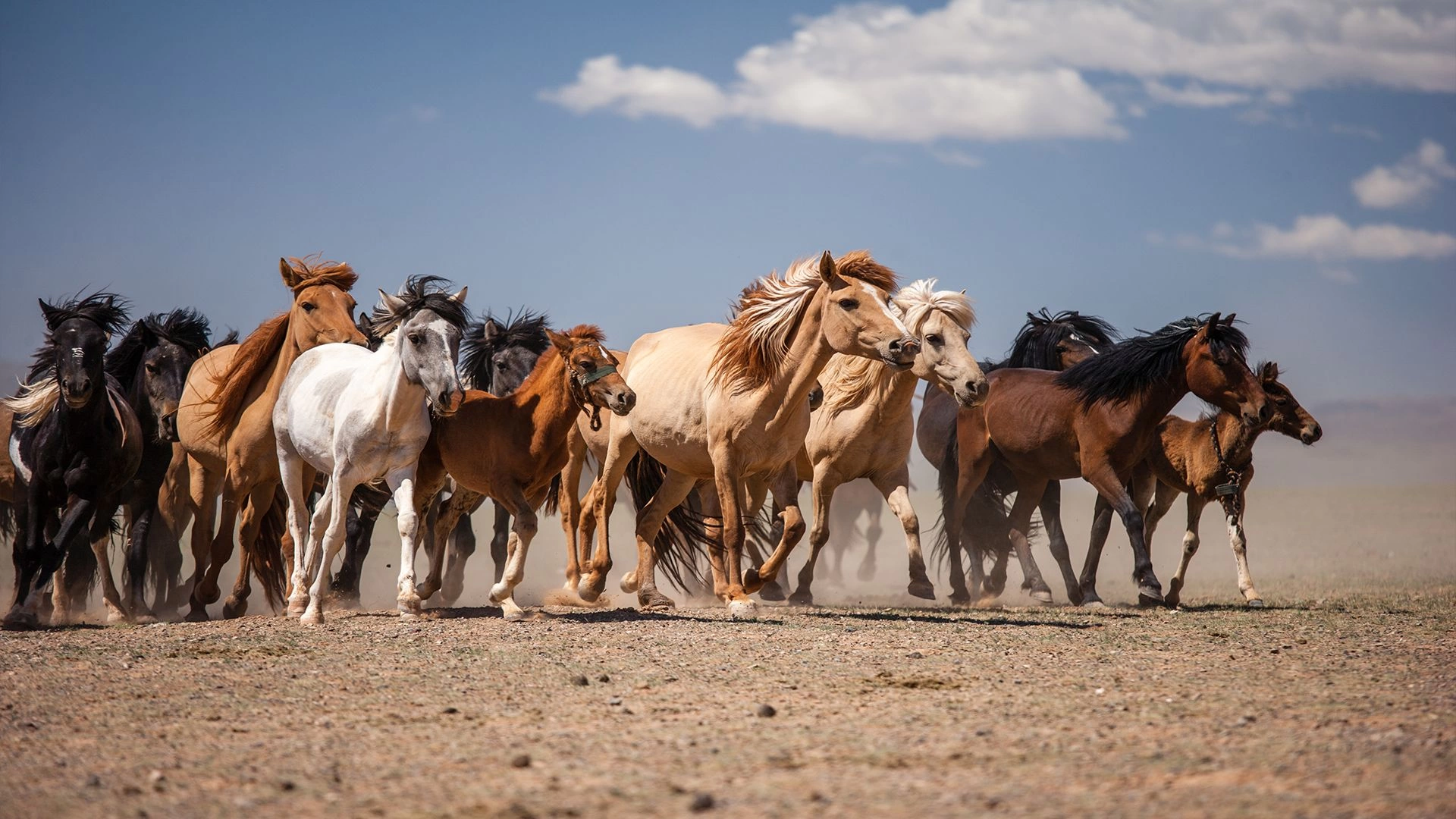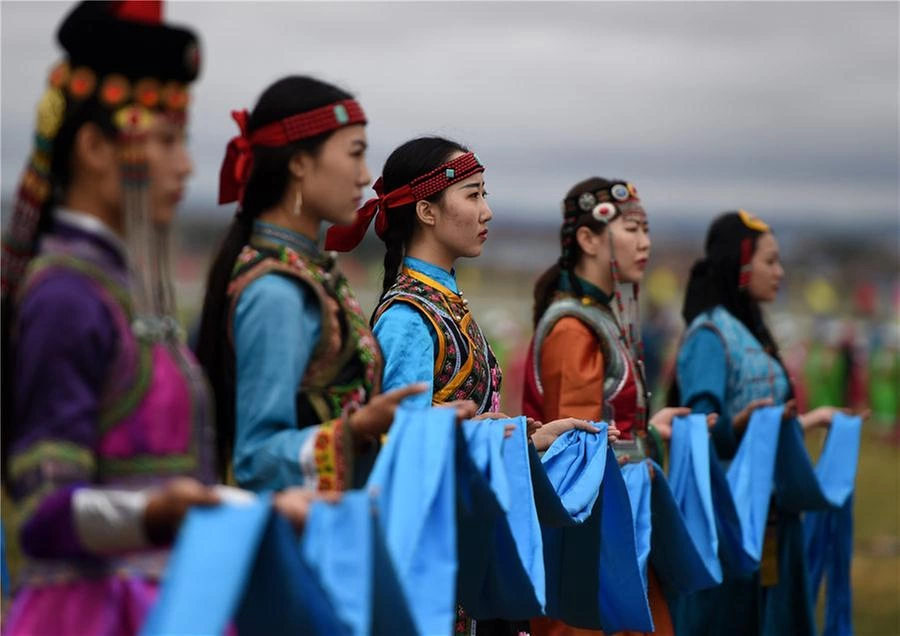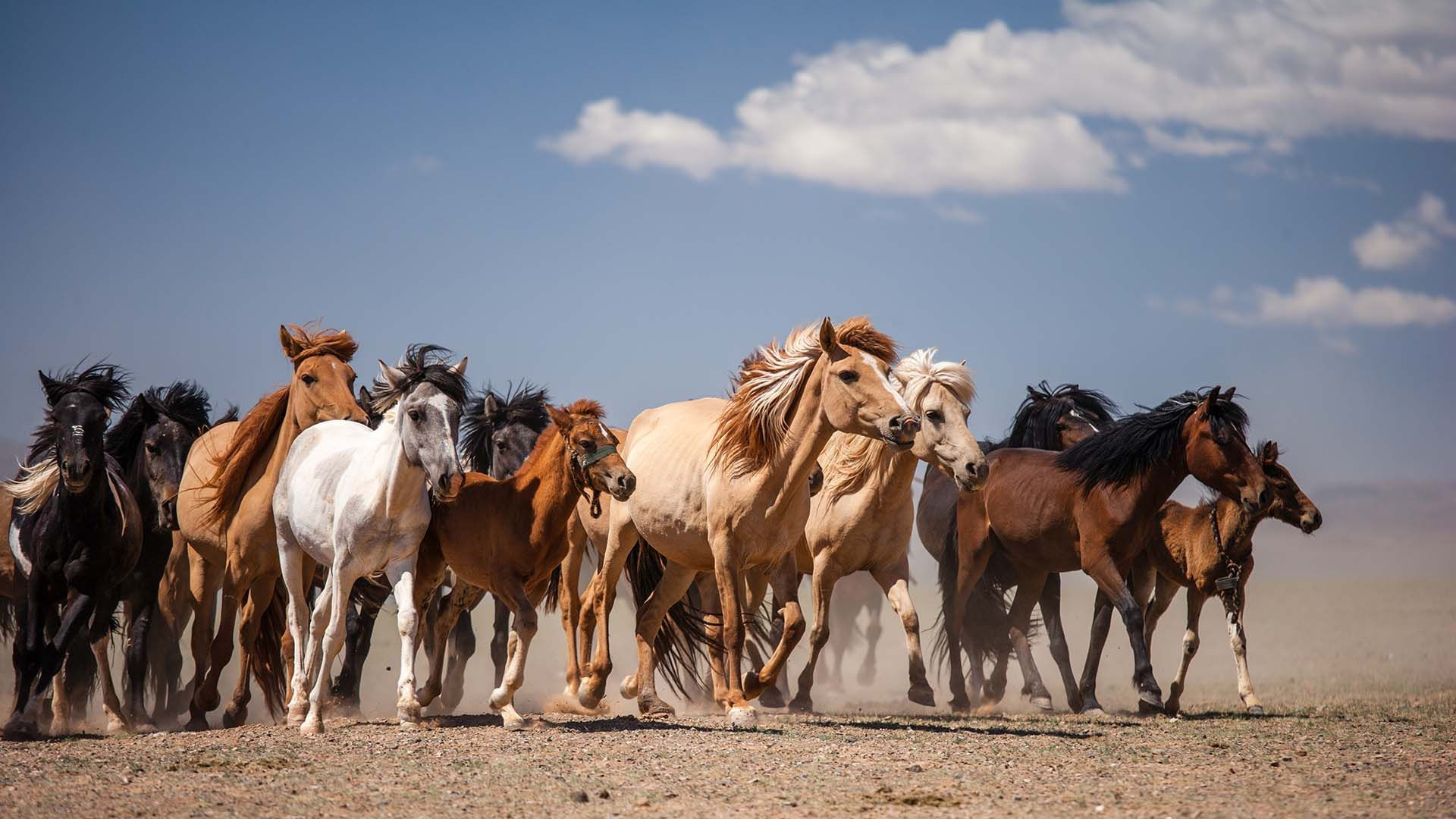
Mongolian Landscape
Part of the country’s allure lies in its wildness and undisturbed natural beauty. The play of light and shade upon this wild landscape has a magnetic charm that pulls the traveler back. Mongolia’s geological assets, the bedrock of the country, are as varied as they are beautiful. Fragments of life millennia ago are found in fossil and skeletal remains – particularly dinosaurs, for which Mongolia is famous. Gems and rich mineral deposits are another legacy of pre-historic times found underground. Geologically, Mongolia comes under the Ural-Mongolian fold belt and flying over Mongolia on a clear day is the best way to see the land formation. You will see numerous mountain folds descending south in smooth, curved arcs.
Mongolia’s different zones
Taiga/forest zone
Mongolia’s taiga zone is part of the vast forested region of southern Siberia. It is found in the Khentii Mountains in the mountainous areas near Lake Khovsgol, and on the north and east slopes of the Khangai Mountains. These Mongolian coniferous taiga forests are comprised of mainly Siberian larch (70%) and, at higher elevations, Siberian pine, mosses and lichens are abundant. The taiga forests of Mongolia cover around five per cent of the country and these areas remain largely undisturbed.
Mountain forest steppe zone
The mountain forest steppe zone is found on the lower slopes of the Khentii and Khangai mountain ranges, in the Mongolian Altai Mountains, in the Orkhon and Selenge river basins, and in the mountains in eastern Mongolia.
Steppe zone
Extensive grasslands, or steppe, make up the heart of Mongolia both geographically and economically. The entire far eastern part of the country falls into this area, extending west below the Khangai range to the Great Lake basin of Uvs Province. This sea of grass covers rolling, undulating land for as far as the eye can see encompassing 205 of Mongolia’s territory. It provides most important grazing lands for Mongolian livestock herds.
Desert steppe (semi-desert)
Desert steppe occupies 20% of Mongolian territory between the grasslands and the deserts. It includes the Great Lakes basin and the most of the lands between the Altai and the Khangai ranges, as well as the eastern Gobi. Low-lying salt plains predominate and rainfall is sparse (100-125mm per annum), and winds and dust storms ravage the countryside, but despite these harsh conditions, many pastoral nomads find a livelihood with their flocks of camels, sheep and goats in these semi-desert regions.
Gobi Desert
Once an ancient inland sea, the Gobi desert occupies much of southern Mongolia and northeastern China. It is a place that attracts many fossil collectors. The landscape is rugged and inhospitable, with little vegetation, but it varies enormously, from mountain massifs with barren, rocky outcrops to the flat plains where you find poplar-fringed oases and sand dunes.

related pages in Mongolia nature and Landscape


Recommended tours

Voluptas in eum praesentium. Occaecati sunt adipisci et.

